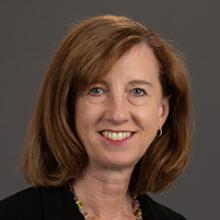Evaluating Title I, Part D Funds and their Impact on Neglected and Delinquent Youth

On any given day, tens of thousands of American youth reside in the care of juvenile justice or child welfare systems. These young people are particularly vulnerable to academic failure, subsequent involvement in the justice or other social service systems, and sustained poverty.
Title I, Part D of the 1965 Elementary and Secondary Education Act (recently amended by the Every Student Succeeds Act), allocates funds to states and school districts to improve educational services for these youth. In 2015-2016, nearly 2,700 state and local programs received a total of $162 million in support of more than 340,000 neglected or delinquent youth.
This study, prepared by AIR for the U.S. Department of Education's Office of Planning, Evaluation and Policy Development, was designed to better understand how state and local agencies and facilities use Part D funds for services in support of youth who are neglected and delinquent.
Study Questions
- How do states and local agencies administer Part D programs?
- What types of services and strategies do Part D funds directly support and are otherwise provided to youth in justice and child welfare facilities?
- How do justice and child welfare agencies and facilities assist students in transitioning back to school, including those outside their jurisdictions?
- How do grantees assess the educational outcomes of students in Part D-funded educational programs?
Key Findings
- State education agencies (SEAs) most frequently reported focusing on creating and reviewing Part D funding applications, supporting federal data collection, and conducting program compliance monitoring. They less frequently focused on providing training and technical assistance to subgrantees or direct involvement in academic instruction in facilities.
- Both SEAs and local facilities primarily used Part D funds for personnel costs, most commonly for core instructional and supplemental teachers and counselors. However, roughly half of coordinators nevertheless reported that facilities faced shortages of qualified instructional and support staff, and many reported challenges in employing teachers within their credentialed content area.
- In addition to core and supplemental academic programming, nearly all Part D-funded state facilities and approximately half of local facilities offered career and technical education.
- Fewer than 25% of students entered a state or local facility with an existing transition plan; more than half had a transition plan developed while in placement.
- More than half of program coordinators said that their facilities provided some form of services to youth after they exited the facility, such as general education support and counseling. Typically, these services lasted under two months.
- Approximately half of state and local facilities could not track any students after they left the program. Among those that were tracked, the most-tracked factors were high school equivalency credentials earned and high school graduation rates.

